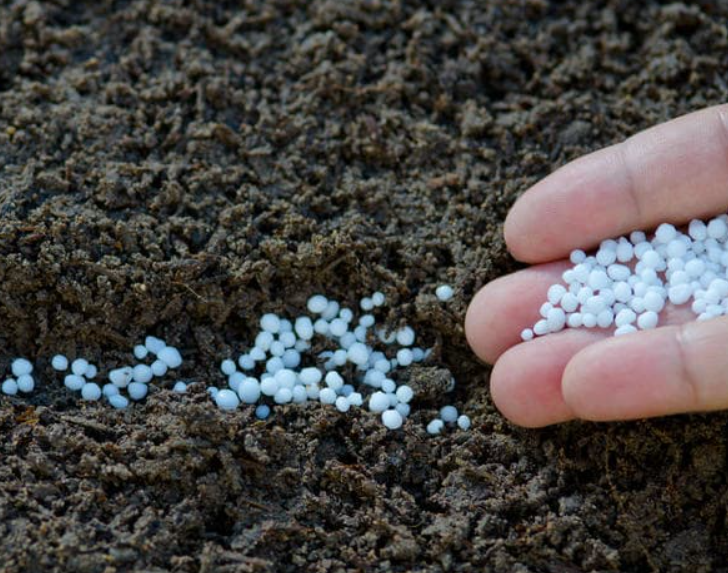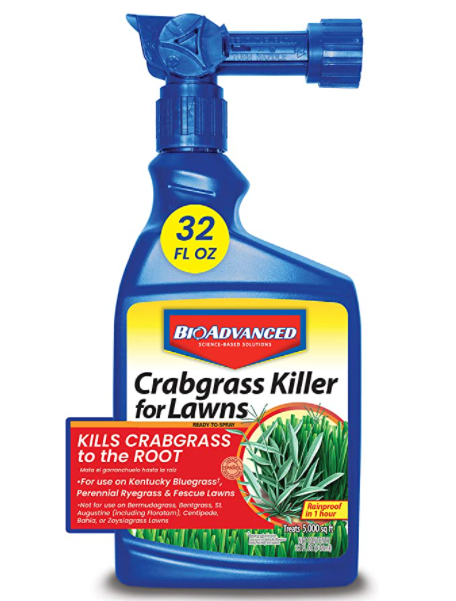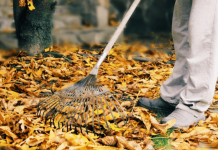A lawn on the plot is a pleasure to behold – a perfect, well-kept and dense carpet of green. But only well-maintained lawns give the impression of being an ornament to the plot and one of the most attractive objects of landscape design. And it is the constant and tireless care of beloved emerald patches that is the most difficult part of growing them. A lawn requires not just regular, but meticulous care that does not stop throughout the active season.
And while mowing is a separate component of care that requires an individual approach, watering, then feeding and airing are needed for all lawns without exception.
When you do any of these spring lawn care tasks, it will all depend on the climate of your region. But in some cases, Mother Nature provides clear clues. For example, use a rake when you are sure that the snow season (if any) is over in your area. A pre-emergent herbicide should be applied between the time the local forsythia shrub blooms and the time the local lilac shrub blooms.
Soil aeration, Soil density
Checking soil density
If your lawn is subjected to heavy traffic year after year, it may show signs of wear and tear. In such cases, your lawn is probably suffering from soil compaction. For example, the presence of moss signals compaction (among other things). It can be gotten rid of, but successfully eliminating moss begins with realizing that moss should not be considered “just another weed.”
Aeration of the soil is the solution to the compaction problem. The good news is that you can rent lawn fans from your local rental place. The bad news is that experts recommend delaying lawn aeration until the fall. But if you’re feeling the pressure during your “spring lawn inspection,” you can at least take the time to care for it in the fall.
Soil acidity, Edging lawn
Soil edging
In addition to compaction, the presence of moss also signals acidity. However, grass likes neutral pH levels. You can solve this problem by liming the soil. But don’t expect a quick fix. The calcification effect is slow.
But first, send a soil sample to the county counseling office to check the acidity of the soil. County specialists can also advise you on how much lime you need per square foot. Apply lime with a fertilizer spreader.
However, if your lawn is serviceable and shows no signs of acidity, do not use lime. Restrictions are only corrective, not preventive measures. Soils that are too alkaline can also cause lawn problems, so too much lime is not enough.
Lawn seeding, Lawn seeding soil
Lawn seeding

Does your lawn have many unseeded areas due to dog walking, excessive traffic, or neglect? If so, you may need to add grass seed to fill in those bare spots. This solution is known as “grass seeding.” Under the supervision of a professional, apply a slow-release nitrogen fertilizer. Five weeks after the grass has sprouted, apply a fast-release nitrogen fertilizer.
However, spring is not the best time to thoroughly inspect your lawn. Fall is the preferred time when new grass should not be competing with crabgrass, which dies due to fall frosts. If the situation is not serious, continue seeding until fall.
Fertilizing, Cool season lawn weeds
Seasonal Lawn Fertilization
Lawns can be fertilized with organic fertilizer, using compost and mulch. But for those who prefer chemical fertilizers, company Scotts offers a lawn fertilization schedule. However, many experts recommend lighter fertilization in spring and heavier fertilization in late fall for lawns known as cool-season grasses. Too much fertilizer in the spring can cause disease and weed problems. If you have already applied fertilizer in late fall, your lawn is still digesting it in the spring.
For those who prefer weed-free lawns, spring lawn care is not only about preventing weeds, but also about healthy lawn growth. Newcomers are often surprised to learn that not all lawn weeds are treated the same. Depending on whether the weed is an annual or perennial, pre-emergent herbicides or post-emergent herbicides are used (although landscapers often use crabgrass killers for both early and post-emergent treatments – an indicator of how strong the weeds can be).
Crabgrass, Pre-emergent herbicide, Crabgrass killer
Apply a preemergence herbicide
If you know you have a problem with annual weeds, crabgrass, spring dressing should be done with pre-emergent herbicides. As the name implies, preemergence herbicides are aimed at controlling weeds. Not completely, but before the emergence of seedlings. Early-acting herbicides do this by forming a “shield” that prevents seed germination. After applying pre-emergence herbicides, the soil should not be aerated. This “breaks through” the shield and reduces its effectiveness.
Crabgrass begins attacking lawns in the spring when the seeds germinate. Partly because of the threat of a spring crabgrass invasion, seeding should be done in the fall rather than spring. “Why not start by eliminating the weed with first aid?” – you might ask. The problem is that most herbicides work on grass seed as well as weed seed!
This is where you can understand the dilemma. Seeding is incompatible with the use of most carcinogenic herbicides. Creating new grass can be difficult if you face competition from grasses in the spring. Therefore, you can propagate grass in the spring and easily in the fall. There will be no competition from crabgrass because fall frosts kill crabgrass.
Turf grass, Weed, Weed dandelion, Herbicide for broadleaf weeds
Using herbicides to control weeds
If you need a spring treatment, look for a product used in the spring. Use a spring herbicide that doesn’t damage sod grass seeds when they germinate. However, if you don’t want to use chemicals for spring lawn care, delay checking until fall.
In the spring, watch closely for the emergence of dandelion, a perennial weed. It is worth paying attention to. Except that the presence of bright yellow flowers on your lawn is undesirable. At the very least, you’ll want to get rid of the flower before sowing lawn seeds. If you’re more ambitious, you can dig them up with the root. Spraying dandelion weeds after weed emergence in the fall is more effective than in the spring. If you choose to spray, choose an herbicide for broadleaf weeds.
If you prefer chemical-free weed control and consistently practice organic gardening, you can harvest these “weeds.”
In addition to proper spring lawn care, you need to add a few more things to prepare for summer lawn mowing. Don’t forget to prepare the lawn mower itself.
No other piece of power equipment is as important and essential to landscaping as a lawn mower. You need someone who can consistently get the job done without chaos throughout the lawn mowing season. And you also need to know how to get the most out of it.
Lawn mower, Lawnmower
Adjust your existing lawn mower or buy a new one

- Mowing your lawn in the summer can be quite a tedious task. Right?
- So why is it harder to mow with a lawn mower that won’t start right away?
- If your machine won’t start, it could be a sign that it needs preventive maintenance.
You can do without it, but it is recommended that you have your mower serviced every year. Don’t put it off and don’t pay anyone until summer. Learn to adjust it yourself.
- Or are you frustrated with your old lawn mower?
- Is it time to make a change?
- Do your research and decide which type is best for your unique landscaping needs.
An overview of lawn mowing strategies
“What do you need to know about mowing the lawn?”
“When you push the mower, it cuts the grass.”
At the most basic level, it does.
And if, to you, mowing your lawn is just a meaningless job you do to please others (and you don’t care too much about the health of your grass), then you don’t need to know anything else about lawn care.
However, if you care about the health of your lawn, you need more than just mowing your lawn so you don’t think it’s being neglected.
Spring is a great time to learn (or revisit) lawn mowing strategies.
Lawn in the countryside – an indispensable element of landscape design, always pleasing to the eye and creates a cozy area in front of the house. The care of grass will not require much effort and time from you.
















